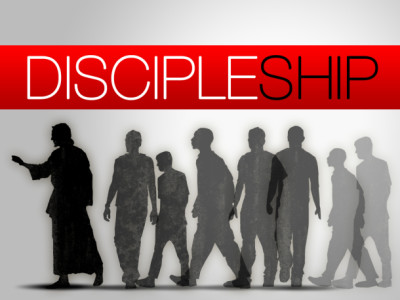Mentoring is a fundamental key in helping others see real life transformation. I think most of our local leaders recognize this need for the youth in our community. It is fascinating to me that Jesus chose to use this model to found and build his church. But I have discover ed that even among Christians, there seems to be confusion regarding what this is all about. Because Jesus personally mentored his disciples, he is therefore, from my perspective, our perfect tutor in how to do this. The New Testament is full of examples and even has actual instruction regarding specifics in carrying this out. But I have witnessed failure numerous times due to misunderstandings, false expectations and preconceptions that prove to be disastrous. So, at the risk of sounding redundant, I would like to put forward a thesis that reflects the simplicity of this blueprint for the Christian wanting to apply this principle: Biblical discipleship is done in a biblical way based on the precepts of Jesus and the lessons learned in the Bible.
ed that even among Christians, there seems to be confusion regarding what this is all about. Because Jesus personally mentored his disciples, he is therefore, from my perspective, our perfect tutor in how to do this. The New Testament is full of examples and even has actual instruction regarding specifics in carrying this out. But I have witnessed failure numerous times due to misunderstandings, false expectations and preconceptions that prove to be disastrous. So, at the risk of sounding redundant, I would like to put forward a thesis that reflects the simplicity of this blueprint for the Christian wanting to apply this principle: Biblical discipleship is done in a biblical way based on the precepts of Jesus and the lessons learned in the Bible.
With you and I positioning ourselves within the framework of the Scriptural ideal modeled by Jesus, we now have the motivation to dig deeper and observe our teacher more carefully. It seems the question a student of the Bible should be asking about now is: How did Jesus model discipleship? Resolving this, we can better understand what he meant when Jesus told us, “Go and make disciples.”
Jesus calls many to follow him, but not everyone says, “Yes.” Among those who say, “Yes” — some never actually do. Those who do follow him begin to become known as “disciples.” When the things get tough, most of these “disciples” fall away. Only a small list remains of the many who had considered themselves “disciples.” On the outset, it may be helpful to consider where you might fit into this story: Are you one that sticks around and learns, or on the first boat out, or somewhere in between?
Again with our focus on Jesus and his approach, and not on the deficiencies of the would-be devotees, here are a few observations that I hope will help you: 1) His disciples always followed him — Jesus did not follow his disciples; 2) When his disciples did not show up — Jesus kept moving on; 3) Those that did show up were present when Jesus did ministry — they became witnesses; 4) Eventually, these witnesses became active participants — first with simple tasks such as collecting extra baskets of bread and administering the money, etc.; 5) Jesus spoke in parables so that not everyone would understand — his disciples, however, continued to follow him and Jesus opened himself up for questions; 6) He answered their questions to the extent they were ready for the real answers. Sometimes they didn’t even understand the question they were asking, but he was patient with them; 7) Eventually, the disciples were given opportunities to do spiritual ministry as well; teaching, praying for people, healing, etc., and were given the power of the Holy Spirit; 8) When it got too difficult, confusing or embarrassing, many of his disciples left him; 9) Jesus often did not meet the expectations of his followers who anticipated something different from him. Even the disciples of John the Baptist were confused over Jesus’ methods; 10) Jesus’ commissioning of the church in Matthew 28 details “baptizing in the name of the Father, Son, and Holy Spirit, and teaching them to observe all things Jesus commanded”; 11) Paul writes to the younger pastor Timothy and says to teach “faithful men who will be able to teach others also.”
We need to notice that Jesus stayed focused on the call. Yes, the “Good Shepherd” goes after the lost sheep, but the disciples are not the lost sheep. I can’t find any example where when Jesus’ “disciples” didn’t bother showing up and simply went back home, he went after them begging them to stay. Being full of the Holy Spirit, always knowing his purpose, he kept moving forward. Those who showed up became witnesses, with opportunities to develop questions, and later to ask and possibly get answers, then to be placed into moments where this new knowledge can be used to help others. This is Jesus’ model of discipleship. This is what we see in the book of Acts as well. To come along with Paul was both a privilege and an opportunity to learn, but when John Mark went home early and left them, Paul did not run after him but stayed in the mission field to finish the race.
The essential model I see in Scripture is that effective discipleship means that the burden of faithfulness is upon the learner. The role of the mentor is to allow those he is “discipling” to come along and witness the ministry, and be available to answer questions as they arise. And you and I fit into this picture. We should have someone who is pouring into us, and at least one other we are investing in. – This is the methodology by which the word of God was transmitted through the generations, from one faithful person to another; now it is our turn.
